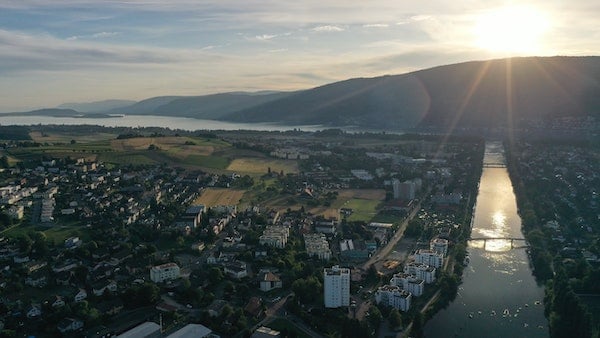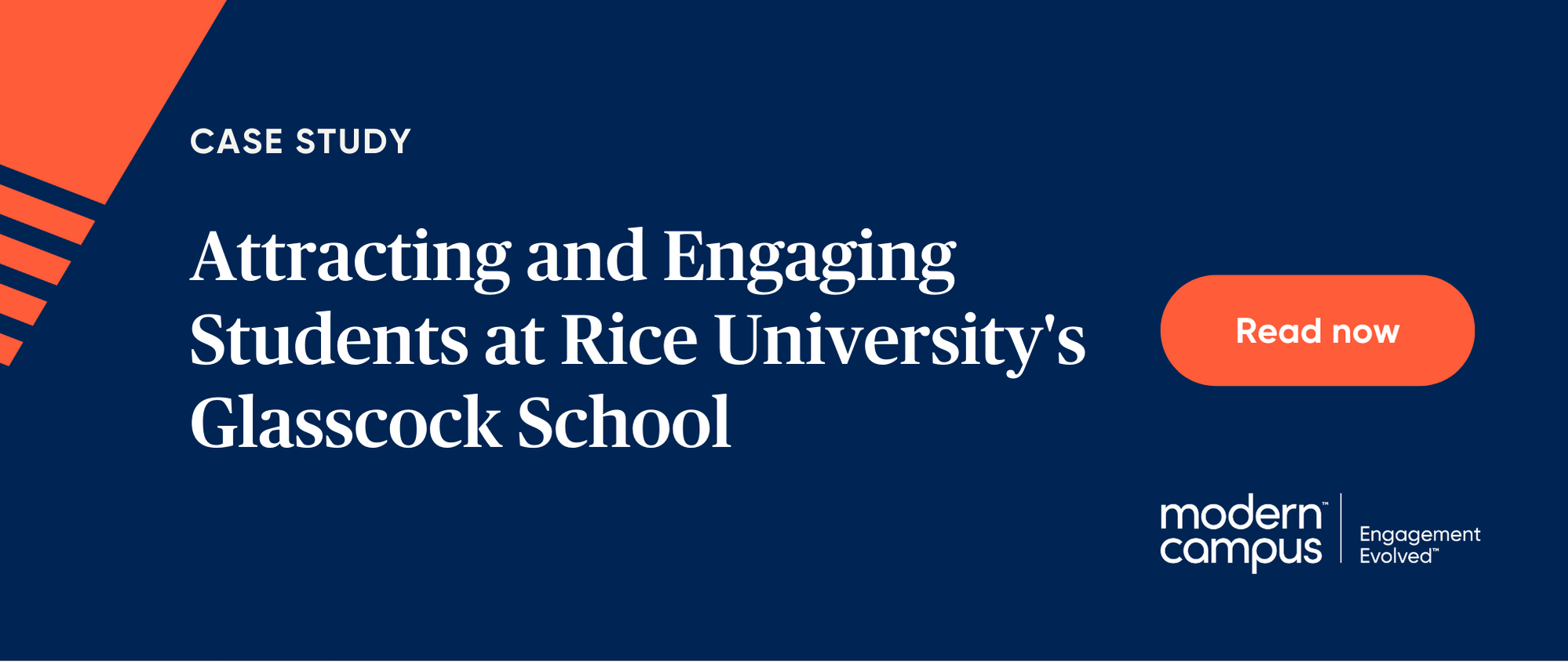Published on
Strategic Planning: Rethinking the Role of Community Outreach

Unquestionably, none of us would like to experience what the last year has brought again. The difficulty the world has faced over the last twelve months was punctuated for those in Texas by February’s ice storm, which caused substantial damage and further impacted an already crippled local economy. However, challenges always present opportunities, and Rice University’s Susanne M. Glasscock School of Continuing Studies has learned lessons through this experience.
At the onset of the pandemic last year, the Glasscock School launched OpenRICE, a public outreach initiative aimed at providing reliable, academically driven information to the Houston community and beyond regarding the pandemic and other critical and timely social issues. Over the course of the past year, the school has offered 68 online sessions serving approximately 10,000 people and counting in the professional, personal, nonprofit and education domains. This free resource has led the school to rethink the role of community outreach in regard to not just mission success but marketing strategy as well.
Reprioritizing Community Outreach and Education
The guiding principles at Rice University are responsibility, integrity, community and excellence, and as a CE unit convening regular courses that bring together thousands of citizens, community is just part of who we are. However, being baked into our identity can sometimes lead to overlooking community outreach and its importance. The pandemic has required us to be more intentional about how we facilitate community and why, digging into who our community is and assessing their needs. For the Glasscock School, this has meant directing our resources at our primary audiences:
- Professionals: both career changers and advancers
- Educators: teachers, counselors and administrators
- Nonprofits: Houston is home to one of the largest nonprofit communities in the nation.
- Lifelong learners: the heart of continuing education
It’s interesting to see that the term lifelong learning—a phrase some threw away years ago—has made a tremendous comeback in recent years. Universities now boast of it in strategic plans and mission statements. For the Glasscock School, one of our primary drivers for programming has always been community need and lifelong learning. In typical times, that need centers on the economic environment, contemporary events and the resulting needs for knowledge and skills, as well as the need for meaning, understanding, connection and insight across the lifespan. The Glasscock School steps into that void, providing a Rice-quality educational opportunity to our community that is both accessible and attainable. This time has been anything but typical, though. From the onset of the pandemic in March 2020, we began to see the ripple effects through our school and community. The lack of reliable information regarding the virus, or perhaps the prevalence of misinformation, began to find its way into many of our conversations as we tried to respond to the changing environment. Concurrently, so many in our community found themselves trying to navigate working and learning from home, dealing with the realities of the subsequent economic downturn and generally just trying to cope with the ever-present stress and anxiety of dealing with something for which society was so ill-equipped.
As a part of Rice, we certainly have the knowledge and expertise for our community at hand, but our traditional delivery and financial model had to be reconsidered during this time, so that we could provide a level of access like never before. That is how OpenRICE came to be. And in its creation, we have developed another tool to help achieve common goals between the university and the Glasscock School, like investing in faculty and elevating their research; expanding access, diversity and inclusiveness; extending Rice’s reach and impact; and engaging in and creating a more successful Houston.
Earning Community Trust with Knowledge
During the COVID-19 pandemic, people literally have been dying for want of reliable, trustworthy information. On campuses across the country, universities have been stepping up to meet this need, with numerous scholars offering their expertise, including public health professionals, infectious disease scientists, physicians, urban planners, economists, educators, psychologists and many more. The pandemic has underscored that knowledge is not a luxury. In times of disruption and uncertainty, our communities need institutions and experts they can trust.
Unfortunately, U.S. universities have a problem with public trust. In 2018, a Gallup survey showed that less than half of Americans had “quite a lot” or “a great deal” of confidence in higher education, a nine point decrease from the prior survey in 2015. No other American institution saw such a large drop.
Universities must continually earn the trust of our communities to survive, so that people will enroll their children at our campuses, support their tax dollars funding higher education and otherwise foster the success of academia. Our communities won’t trust us if they don’t know us and if they don’t benefit from our expertise directly, especially in times of crisis.
At the Glasscock School, one way we responded to the pandemic was by creating our OpenRICE program, offering free webinars to the community on such topics as COVID-19 vaccines, voting safely in a pandemic, COVID-19 and communities of color, leadership in uncertain times, the domestic violence crisis, the transition to virtual learning and how the pandemic has changed our cities. Like many other universities, we pivoted hundreds of courses online in a matter of weeks, ensuring that isolated retirees, recently laid-off young professionals, exhausted nonprofit staff and overstretched healthcare workers all had opportunities to connect, learn and thrive.
Our community told us: “It’s so important for Rice University leadership to connect with the community at this time.” “I can’t really afford to do the Continuing Ed classes…Thank you very much for offering this series.” “THANK YOU! In a world of ‘alternate facts’ it is SO IMPORTANT to have access to unbiased and scientifically-sound information.” “OpenRice is doing great work, especially for those retired and isolated alone at home!” “Thank you Rice University for keeping our communities informed and connected.”
OpenRICE has become a signature community program not only for the Glasscock School but also for Rice University as a whole, with involvement from multiple faculty and departments, earning a University Professional and Continuing Education Association award.
Through such initiatives, continuing education can grow our impact, sustain our work and help lead higher education through this tumultuous time, elevating the outstanding scholarship and teaching that characterize our institutions while fostering trust and permeable edges between our campuses and communities.
Driving Investment in Community Outreach Programming
Knowing that cost will always be a major factor of consideration for the CE unit, investing in any effort has to tie back to some level of fiscal return, which is a reality that has historically hamstrung many community outreach efforts. Like many CE units across the country, the Glasscock School is self-sustaining. Our programs have to break-even, which means we are prudent with our financial models and resolute with our balance of revenue need and community access.
For the Glasscock School, we have tried to look at ROI outside of enrollment fees and instead focused on lead generation, earned media and brand awareness from both public and university audiences. While these things are considerably harder to quantify than enrollment fees, they are undeniably valuable, allowing us to not only serve our traditional audiences but to also expand our community footprint and create inroads to our other more expansive learning content.
In essence, with OpenRICE, we have taken the traditional “gated content” marketing approach and applied it to our registration process for each session. We’ve all seen this approach when clicking through a digital ad that requires subscribing to an email before accessing the information advertised. By utilizing this as our registration method, we have generated nearly 5,000 new qualified leads, all of which are self-selecting into the appropriate enrollment funnel based on the type of session they register for, either personal, professional, nonprofit or educational.
In addition to generating leads, we have garnered a fair amount of earned media within our university news services and with local media as well. This raises the platform of the Glasscock School, the university and the faculty members conducting the sessions.
Considering these facts, the cost of conducting OpenRICE is not a sunk cost but part of our marketing and instructional technology budget. And it is an investment on which we are seeing tremendous return while providing a valuable, free resource to our community and accomplishing the mission of the school.
Outreach Program Funding
Community education programs hold the potential to be highly sustainable. However, they require a diversified, collaborative approach to funding. Outreach programming rests on a multi-pronged foundation of school and institutional investment, participant revenues, partner in-kind resources and philanthropic contributions.
Participant revenues—the traditional mode of funding continuing education—are an important source of income for outreach programs. However, to ensure broad community access, community program fees should be modest and funding models should incorporate scholarships and other free and reduced-price opportunities. While our free programs are designed to provide meaningful learning experiences on their own, we also offer related fee-based courses and programs for people who seek deeper learning.
The community and campus partnerships essential to effective outreach programs often yield critical in-kind resources, such as donated services or free promotional opportunities. The value of these resources should not be overlooked.
Charitable contributions are a third and vital aspect of the community program funding stool. Community programs at the Glasscock School have inspired support such as $25 donations to our general fund, spontaneous $1000 contributions to underwrite an intimate performance by musicians from the Houston Symphony, a $4000 gift to fund teacher scholarships for an anti-racism course, and the enormously generous endowment that provided the naming gift for our school and helps sustain many of our programs today. In some cases, philanthropic support may be secured to initiate a project; however, in our experience, it is more likely that individual or charitable giving emerges after a program has been piloted, gained some momentum and has initial evidence of likely success and impact.
Therefore, school and institutional dedication to community outreach programming is essential, both in the early phases of a new initiative and to ensure core support, services and staffing to sustain the venture. Communities can, and often do, provide substantial amounts of support for educational outreach, but first we must demonstrate our own commitment to serving our communities.
Thinking Differently About Community Outreach Work
First, it’s important to recognize that community outreach efforts have been very disparate across universities. Those who attempt community outreach do so with region-specific strategies, which is a good thing. Community is a term often used incredibly broadly. Doing community outreach well requires understanding who your community is, and in turn, how your organization is equipped to serve them. In the case of OpenRICE, this has meant service to professionals, nonprofits, educators and lifelong learners. Those audiences are central in the Venn diagram of the city of Houston and the Glasscock School’s expertise. A second consideration is that many institutions simply do not attempt it due to a list of factors, with financials at the top.
While it’s essential that our efforts are sustainable, we must also ensure that those efforts remain inside the guardrails of our university’s principles and the needs of the community. Rice University’s first president Edgar Odell Lovett said, “Education does not begin with the university, nor does it end in the university. It is a matter of life, the whole span of life.” When so many lives and livelihoods have been upended by COVID-19, the need for ensuring broad community access to higher education’s expertise has never been more urgent. Thankfully, we are slowly seeing the promise of an end to the pandemic, but that is one crisis of many that our community faces. No institution in our country is better positioned to tackle societal issues than the continuing education units of our nation’s universities. We find ourselves at the intersection of our two worlds: academia and community.
At the same time, the pandemic has placed tremendous financial strain on universities. Continuing education units must lead their campuses in ensuring both broad community impact and fiscal sustainability. Accomplishing this takes the same skills that have always sustained CE units: creativity and innovation. We have found success in the OpenRICE model, which has allowed us to pursue community outreach with a both/and mindset as opposed to an either/or in terms of mission versus money. All the while, serving both sides of our intersection.
Cohesive Outreach Across the Institution
There is no doubt that community outreach matters to most universities, from institutional vision statements like Rice University’s, which includes a strong commitment to engage Houston and empower its success, to the community-based research and service that animate so many faculty, students and staff. Yet, many universities are not structured to support cohesive community outreach, fully integrated across the institution.
Continuing education units can provide their universities with leadership, models and support to foster strategic, institution-wide community education initiatives, building on decades of experience engaging their communities, organizing dynamic cross-campus collaborations and piloting innovative learning programs. Continuing education units that foster personal development in tandem with professional development are particularly well-positioned to help their universities engage learners across the lifespan.
OpenRICE and other initiatives we’ve developed during the pandemic have underscored the need for holistic approaches to outreach, fostering much deeper and more effective collaborations among our departments and challenging us to serve our audience not as personas but as whole people. In the pandemic, the boundaries between personal and professional lives began to blur and overlap as never before. Cats running across keyboards and children wandering into Zoom rooms made visible the multifaceted identities we’ve always possessed. The pandemic was a call to humanize continuing education and to support the fullness of individuals and communities. We’ve responded by offering courses like our Facing Race series, which includes retirees, teachers at Title I public schools and Rice staff learning in community.
It is vitally important that universities serve their communities. We have an obligation to make our expertise and resources broadly available within our city and region, ensuring the most equitable educational impact possible. Welcoming learners throughout the arc of life—returning alumni, recent retirees, families from nearby neighborhoods, emerging and seasoned professionals, campus staff, and more—allows universities to expand their impact.
Community engagement is about so much more than doing good for others—it’s also about creating a flourishing educational ecosystem necessary for diverse people and ideas to thrive.
We need a fundamental shift in how we think about university community engagement. Educational outreach is not a gift that universities bestow upon their communities. We have more to gain and learn from deep connections with our diverse community members than we can possibly give. Our undergraduate students will have a richer understanding of the complex, multigenerational, multicultural world they inhabit and will inherit if they interact with elders discussing the evolution of our city or stand shoulder to shoulder with young children drawing collaborative public artwork. Our faculty will refine their outstanding pedagogical abilities even further if they teach and learn from people who lived through the very history they study. Our researchers will formulate more nuanced questions if they connect with our neighbors in a program exploring creative solutions to our city’s inequities. Our community learners and leaders will become advocates for the relevance of academia if they have the opportunity to grow their skills, knowledge and connections with us throughout their careers and lives. Our campuses will be more dynamic and resilient if their boundaries are fluid and if we cultivate, celebrate and sustain engagement with and for our vibrant communities.
Learn more about the Susanne M. Glasscock School of Continuing Studies and their OpenRICE initiative here: glasscock.rice.edu/openrice.
Disclaimer: Embedded links in articles don’t represent author endorsement, but aim to provide readers with additional context and service.




